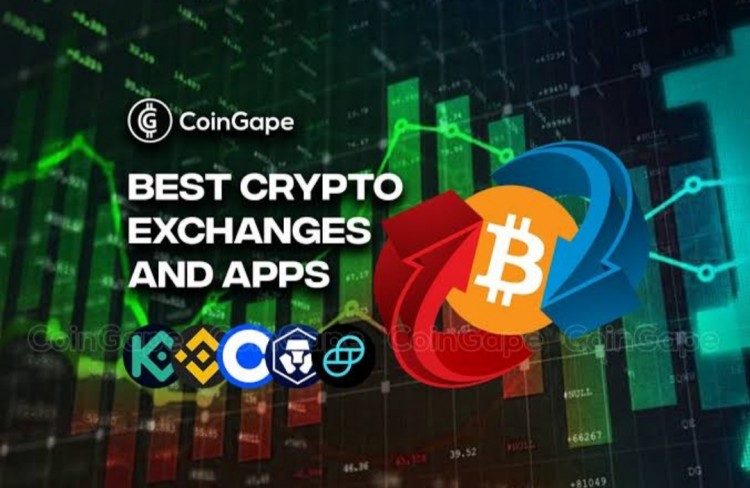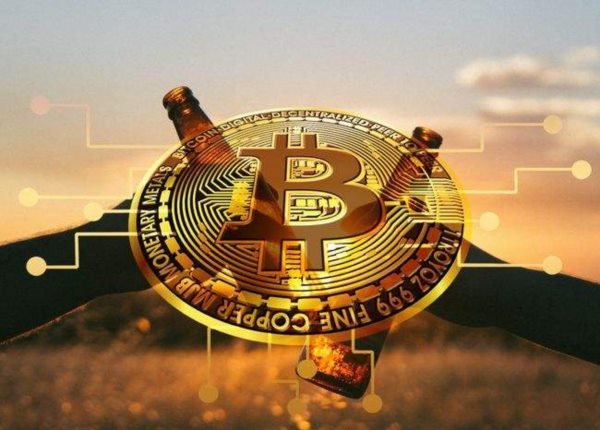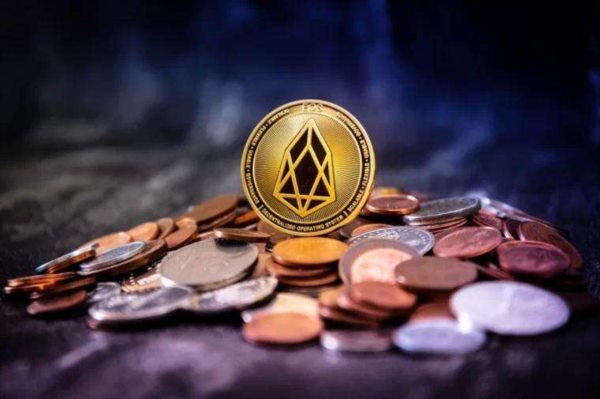時間:2024-02-18|瀏覽:352
最近在美國推出的 Newborn Nine 現貨比特幣 ETF 自推出以來的 9 個交易日內,其管理的總資產激增至 51 億美元。
然而,在此期間,比特幣的價格下跌了約 20%。
這些 ETF 的股價也與比特幣價格一致下跌。
那么,如果 ETF 股票價值下跌,它們如何繼續購買更多比特幣呢?
商品股 ETF 旨在代表標的資產的敞口。
就現貨比特幣 ETF 而言,標的資產當然是比特幣。
當資金流入該基金時,它被用來以等價購買比特幣。
隨著需求的增加,ETF 份額的價值也會增加。
相對于基礎比特幣價值的股票價值被稱為“資產凈值”(NAV),這被用作評估該基金相對于其持有的比特幣是否被高估或低估的晴雨表。
創建 ETF 股票籃子。
ETF 中的新股并不是在投資者決定買入時憑空創建的。相反,它們是由授權參與者 (AP) 在籃子中創建的。
例如,貝萊德目前保留荷蘭銀行清算公司 (ABN AMRO Clearing)、簡街資本 (Jane Street Capital)、摩根大通證券 (JP Morgan Securities)、麥格理資本 (Macquarie Capital) 和 Virtu Americas 作為 iShares 比特幣信托基金的 AP。
對于貝萊德來說,這五家公司是唯一能夠創建或贖回與 ETF 相關的一籃子股票的實體。
一籃子股票由 40,000 股組成,截至發稿時每股價值約為 906,365 美元。
每個籃子相當于約 22.7 BTC,這意味著每當為 ETF 創建股票時,必須至少購買 22.7 BTC(1 籃子)。
當股票被贖回時,至少等量的股票會被出售以換取現金給受影響人。
在目前的機制下,只能使用現金來創建股票籃子,這意味著 AP 不能向貝萊德提供比特幣來換取股票。
To meet liquidity needs, APs will often buy baskets of shares ahead of time to sell to the market. This process happens once per trading day and uses the CF Benchmarks Index rate for Bitcoin (New York variant) to ensure shares are issued relative to the price of Bitcoin. When the trading activity for an ETF is high, it means there’s a high demand for shares, and thus, there needs to be sufficient liquidity to handle the volume. Baskets of shares will be created in line with the volume, and these new shares will be used to report inflows into the ETFs.
For instance, if 7 million new shares are created, bringing the total outstanding shares to 70 million, and the NAV price for the ETF is $22, the AUM increases by $154 million to $1.54 billion. However, these shares have not necessarily been sold into the open market and in the hands of investors. The newly created shares may still be held by the APs, ready to be used as liquidity for the trading activity ahead.
If Bitcoin’s price declines, which leads to investors selling shares in the ETF, the assets under management do not necessarily decline at the same rate. While the AUM may reduce in dollar terms if Bitcoin becomes less valuable, the number of BTC held in the fund remains unchanged until the AP redeems shares.
A reduction in ETF share price while its AUM increases due to additional Bitcoin purchases, therefore, could signal that the APs believe the underlying asset is undervalued. APs can hold onto outstanding shares without redeeming them if they believe Bitcoin will be worth more in the future. Each share is priced relative to the AUM when valued in dollar terms. Therefore, by not redeeming the shares if Bitcoin rallies in the future, the AUM will also increase, making each share more valuable.
Therefore, given that both the Newborn Nine and the underlying Bitcoin have declined around 18% since launch. At the same time, the combined assets under management have grown by approximately $550 million per day, and it seems the APs are not redeeming shares.
The only ETF seeing outflows in terms of redemptions is Grayscale, with its imposing 1.5% fee and majority of investors in profit. All other ETFs, namely the Newborn Nine, are experiencing daily inflows via new share basket creations from APs.
There is around $1.5 billion in trading volume across the spot Bitcoin ETFs, which requires considerable liquidity to facilitate. Should this liquidity fall off, we may see some redemption activity.
Until then, the combined value of cash used by US institutions to facilitate share creation for Bitcoin ETFs is over $27 billion. Given that the price has declined while new share baskets have been created, it is reasonable to assume that some of this Bitcoin is essentially owned by APs such as JP Morgan and Jane Street Capital, among others.
Now for the slightly ‘tin foil hat,’ full Bitcoin maxi part of the argument. If JP Morgan as a company were as bearish on Bitcoin as CEO Jamie Dimon, one might expect baskets to be redeemed as long as enough shares exist in the market to handle liquidity. Yet, from current data, it seems no share baskets have been redeemed for the Newborn Nine. Any shares that may currently be unallocated to investors belong to the APs who created the baskets.
For BlackRock’s iShares Bitcoin ETF (IBIT), 11.9 million shares changed hands on Jan. 24, with 77.2 million shares outstanding. This calculates to around a 15% liquidity rate.
In comparison, BlackRock’s iShares Core S&P 500 ETF (IVV) has 854 million shares and an average volume of around 5.5 million, indicating a volume of 0.6% of the float. For IBIT, this equated to roughly $270 million in volume, while IVV saw around ten times more at $2.7 billion. Thus, IVV has 10 times the volume, but IBIT has 25 times the liquidity.
The high liquidity for Bitcoin ETFs indicates strong, albeit potentially more speculative, interest in the financial products. IVV’s lower trading ratio indicates its stable position in the market, with far less speculative trading. However, the Bitcoin ETF may also be less sensitive to large trades, given the deep liquidity available.
By all accounts, the debut of spot Bitcoin on Wall Street has been an enormous success. The interest from investors is evident through the volume, and the institutional interest and belief can be seen clearly in the strong basket creation across the board.
I’d even hazard to guess that if volumes decline, we will continue to see daily inflows into the Newborn Nine ETFs as long as Grayscale continues its outflows. Given how the Bitcoin price is calculated for ETFs, buying Bitcoin from Grayscale is an excellent method of averaging dollar cost into Bitcoin. This is especially true when, on paper, APs are giving cash to the world’s leading asset managers like BlackRock and Fidelity rather than custodying Bitcoin themselves. Further, there is no public exposure to this method of Bitcoin accumulation, meaning that the reputational risk is low.
Unfortunately, unlike blockchain, TradFi is a closed book. There is no way to know how many outstanding shares are held with APs and how many are in investors’ hands. Future disclosures and reports may give snapshots of the situation, yet we are left mainly in the dark until TradFi adopts a more transparent blockchain-based infrastructure.
The answer is maybe. To address whether institutions such as JP Morgan and other APs could be using ETFs like BlackRock’s as a proxy to buy Bitcoin, I’ll end with this line from BlackRock’s prospectus;
授權參與者沒有義務創建或贖回籃子,授權參與者也沒有義務向
公眾發售其創建的任何籃子的股份。
“
當然,這是此類文檔的標準語言,但它確實讓您感到好奇。
這種靈活性可能非常重要。
這意味著這些機構可以自由地以符合其投資策略的方式管理其對 ETF 的參與,包括他們希望如何接觸比特幣。
因此,如果一家機構認為比特幣的價值會增加,它可能會創建籃子來獲得更多股票(從而增加對比特幣的敞口),而不必將這些股票出售給公眾。
另一方面,如果他們不太樂觀或想減少風險敞口,他們可能會選擇不創建籃子。
這種策略可能是機構間接投資比特幣的一種方式,使用 ETF 作為管理投資的工具,而無需直接買賣比特幣本身。
更新:澄清了 iShares Core S&P 500 股票代碼。
![[伯特]為什么貝萊德比特幣持有量隨著價格下跌而增加](/img/btc/6.jpeg)








